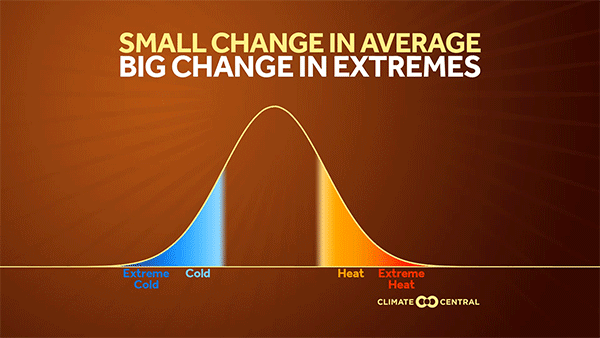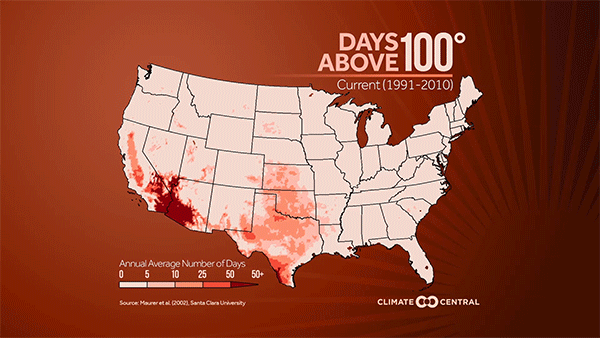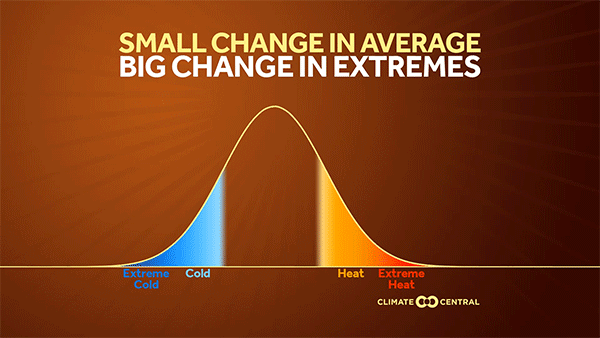







Climate change is driving up summer temperatures across the country. We often talk about warming in terms average temperatures, which can be perceived as small to the public, but any rise in the average temperature leads to a rise in the the number of days that are extremely hot.
To understand what’s happening, we need to get a little geeky and take you back to Stats class. The classic bell curve represents the distribution of all temperatures at a location. The bulk of temperatures — those close to average — sit near the middle of the curve. Record temperatures, which are rare, sit on the fringes, with hot on right and cold on the left. As the world warms from the increase in greenhouse gases, the whole curve shifts to the warmer side, the right. This shift results in a large jump in the number of extremely hot days and a drop in the number of extremely cool days. It also means heat records are more likely to be set than cold records. And it is these extremes that impact our lives.

That’s what we are seeing across much of the country. Average summer temperature have risen few degrees across the West and Southern Plains, leading to more days above 100°F in Austin, Dallas and El Paso all the way up to Oklahoma City, Salt Lake City, and Boise. It’s worth noting that this trend has been recorded across the entire Northern Hemisphere, as show in this WXshift animation.
The increase in extreme heat has repercussions for health, farming, and the energy grid that we rely on to stay cool in the summer. More extreme heat raises the risk of heat-related illnesses, like heat exhaustion, and allows insects to move into new areas, potentially increasing the spread of vector-borne diseases. It stresses crops accustomed to a milder climate and can worsen drought. Extreme heat is also associated with air stagnation, which traps pollutants and can worsen respiratory illnesses like asthma. The additional heat raises the demand for air conditioning, increasing cooling costs and straining the electric grid.

